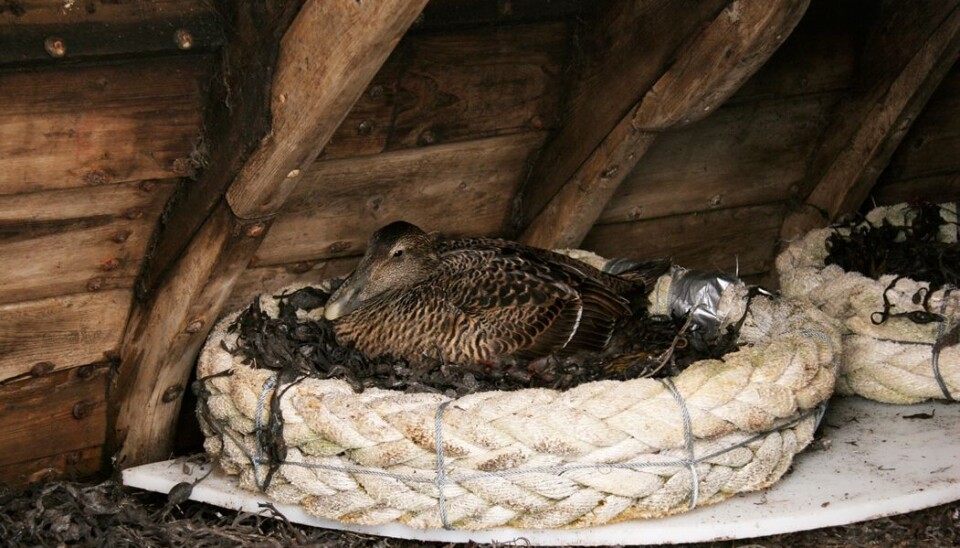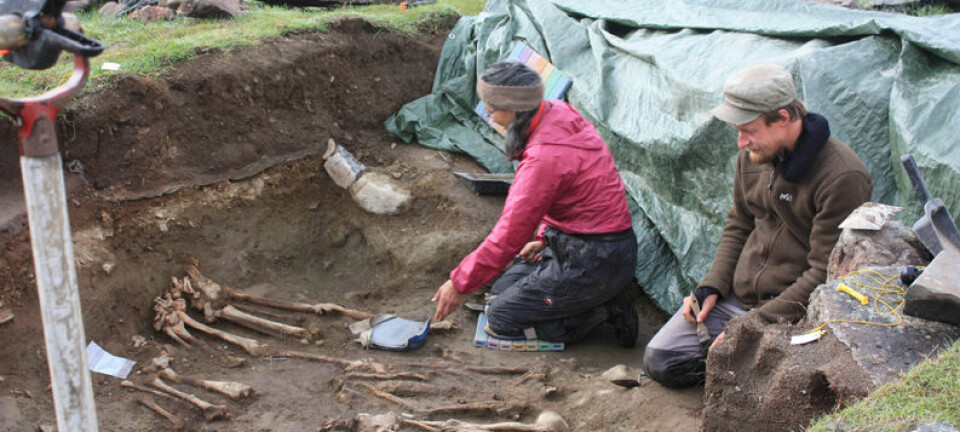An article from University of Tromsø – The Arctic University of Norway

Two North Norwegian Wonders
The rock carvings in Alta and the traditional avian husbandry on the Vega islands provide ample evidence of how people adapted to life in Northern Norway in truly amazing ways. No wonder they are both on UNESCO’s World Heritage List.
Denne artikkelen er over ti år gammel og kan inneholde utdatert informasjon.
Some places are so important that losing them would represent an irreplaceable loss for humanity as a whole.
We all have a shared responsibility to take care of these places for future generations. UNESCO’s World Heritage List serves as an encouragement to all countries of the world to preserve its natural and man-made wonders.
Researchers at the University of Tromsø are studying two of Norway’s wonders that made the list: the Vega islands and the rock carvings in Alta.
Ea as the island residents’ “animals”
“Most of the people who live on the Vega Islands were surprised when they found out that the islands had been included on the World Heritage list in 2004. Many thought that the site was added to the list simply because it is so beautiful there. It certainly is beautiful, but it's not quite that simple,” says Bente Sundsvold, a visual anthropologist at the university.

The Vega islands, about 6,000 islands in all, are found on the exclusive list because it is home to a place where there is a very special relationship between human and birds. For centuries – perhaps millennia, people on the islands have been making a living from eggs and down.
Eider ducks, or “ea” as they are locally known, produce the finest natural down available – eiderdown, and it is very exclusive. People have gone to great lengths to enable the ducks to continue to incubate their eggs on Vega. Among other things, they have made nests for them with dried seaweed and built special “houses” for them, to protect the birds from predators. By “waiting on” the birds in this way, inhabitants ensure that they get the finest possible quality down, and the birds feel safe enough to return - year after year.
“During the springtime, which is the most critical time in the breeding process when the eider ducks look for nesting sites, everything that happens is for the benefit of the birds. Residents avoid having a fire in the fireplace, for example, and in the old days children were bribed with nice toys so that there would be peace and quiet on the islands. The locals refer to the ducks as the islanders’ ‘livestock’. The birds are certainly not tame and they do as they want, but it’s a win-win situation for both parties,” says Sundsvold.
Sundsvold thinks that the egg and down tending would have been forgotten if it were not for the status of the World Heritage List.
“For many years after World War II people were rewarded by the state if they moved from rural areas, and Vega was no exception. This meant that there were fewer and fewer who relied on tending the eider and their down. But if the site is to remain on the World Heritage List, the tradition of tending the birds and eggs must be kept alive,” says the researcher.
Etched and drawn in 5000 years
“Evidence of our ancestors is important to preserve. After all, their successes are what enable us to be here today,” says archaeology professor Knut Helskog.
Helskog was one of the first academics who started to identify and interpret Northern Europe's largest collection of rock carvings, made by hunters and trappers. Since 1973 more than 5,500 rock carvings and rock paintings have been documented in several places around Alta, the oldest from about 5200 BC.
The carvings were made close to the sea, on rocks along the beach.
“As the glaciers retracted after the last ice age, the land rose and stones that had once been below sea level were carved as well”, Helskog says. “There is a span of 5,000 years between the oldest drawings on top and the youngest at the bottom. This means that they can be divided into time periods, and we can see that the shapes change significantly over time,” he says.
Helskog wrote the scientific rationale for including Alta and its rock carvings on the World Heritage List, and in 1985 the region was added to the list.
“What makes this place unique is that the content is so rich and diverse, for instance with compositions showing bear hunting and reindeer trapping. Carvings were used to communicate with other people, but also with the subterranean world, with animal souls and gods. The carvings probably stopped because they found other ways to communicate,” Helskog says.
Helskog says the drawings show that hunters, trappers and fisher folk had more knowledge and strength than we previously believed, and fared far better than we previously thought.
“The more I study this, the greater my admiration for these people. This legacy is something we should all be proud of,” he says.
































